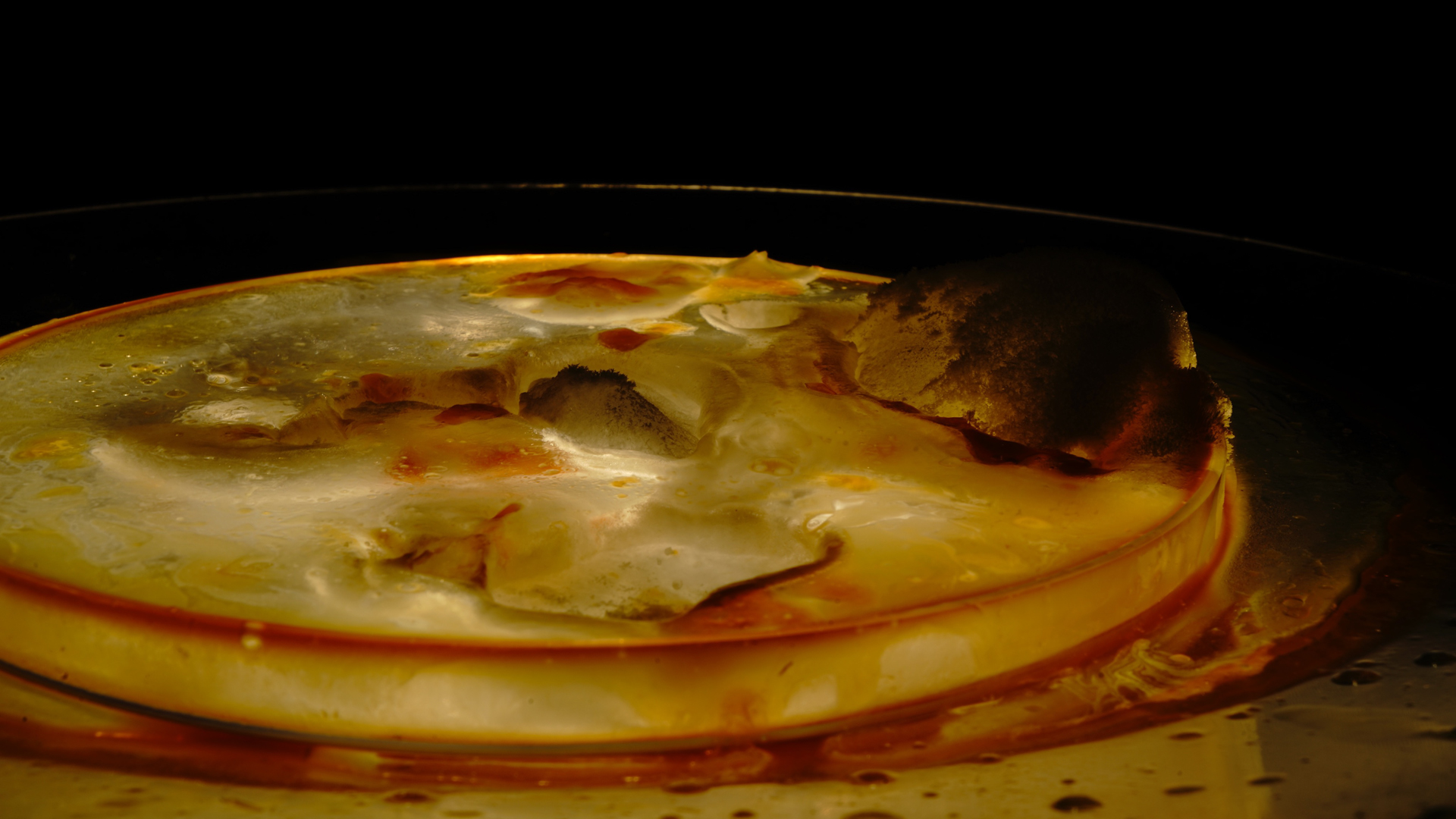“Crude Illumination” presented by Vargas
Symposium:
- ISEA2016: 22nd International Symposium on Electronic Art
-
More presentations from ISEA2016:


Session Title:
- Toxic Environment
Presentation Title:
- Crude Illumination
Presenter(s):
Venue(s):
Abstract:
Project Description
Crude Illumination is a light projection installation. The piece consists of an acrylic container of oil (crude) and dry ice (frozen carbon dioxide) placed on an overhead projector. As the room temperature oil causes the dry ice to sublimate (at -109.3ºF), the dry ice changes shape and state, and interacts with the liquid oil surface and light projection. This dynamic information exchange is projected onto a nearby wall, via an analog projection apparatus. Crude Illumination is a material and theoretical study of the influence of information embodiment in the anthropocene, an introduction to what I call signal flow.Thesis
Signal materialism and information embodiment illuminates invisible subject-hood formulation. A deep viewing of Crude Illumination provides a complex consideration of petropolitics and climate change as a projected signal flow of decaying material technologies and western ideologies – in other words, a myth, a fiction, a haunting dance of ineffable light. As oil sublimates carbon into our environment, the cloud disperses information everywhere.Background
Contemporary western culture privileges visual perception a priori, yet increased technological innovation sharpens our lens to the invisible forces shaping our mediated experiences. Increased attention to the anthropocene has shifted scientific consideration of materialism. Crude Illumination argues for a signal materialism; a state of flow in which the spaces of human experience becomes a plural terrain of shifting dynamics shaped by visible and invisible material forces such as acoustic ecologies, signal transmission, microbial clouds, and a history of capital extraction and resource exploitation.These forces feedback onto themselves as a mesh of information exchange experienced as transparent observable phenomena. Unlike the ethical questions surrounding information privacy and transparency at stake in a culture of technological mediation, Crude Illumination highlights some ways in which information has never been private; it is exchanged, reconstituted, and catalysed into new forms. Furthermore, our own entanglement and complex personhood renders any point of origin a grand mythology.
Methods
-Material as method: signal materialism intends to bring to life the connected emergence of water as information conduit (sediment, nutrients, organic decay, etc.), light as information projection, oil as signal materialism of a crude capital translation (poor energy), i.e. a neoliberal market.-Light as a primary signal flow: projection hurls information into space. The overhead projector fetishizes the historical information apparatus and points to techno-information as material object.
-Information is an object: Wendy Chun argues for software as a thing, yet increasing technological mediation renders techno-information invisible, much like the many invisible forces always already part of the anthropocene.Technical Logistics: Overhead projector, 16oz Pennsylvania Crude Oil, 5lb Frozen Carbon Dioxide (Dry Ice), 16oz Water, 2 plastic or glass plates, White Wall and empty floor space (roughly 8’x8’), Electricity







